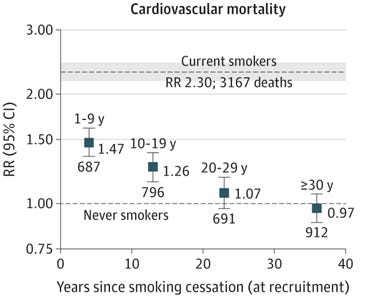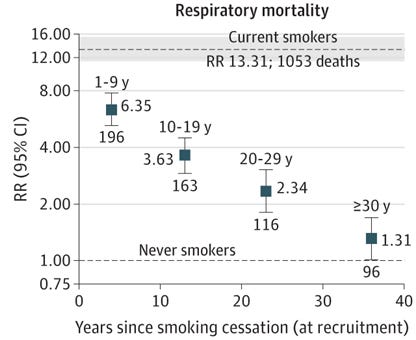Researchers published data in JAMA Oncology with 20 year follow-up of smokers who had quit, linking the National Health Interview Survey with a national death database. They found that compared to never smokers, current smokers had 2.3 times higher cardiovascular mortality, 3.4 times higher cancer mortality, and 13.3 times higher mortality from respiratory disease. The good news is that these excess risks came down substantially even in the first decade after quitting. For instance, excess risk declined by 36% for cardiovascular and cancer mortality and 42% for respiratory disease mortality in the first decade.
Source: Thomson, et al JAMA Int Med November 27, 2023 LINK
Implications for employers:
- Quitting smoking dramatically decreases risk of excess mortality. This supports continued robust employer efforts to decrease tobacco smoking, including all-campus smoking bans and access to smoking cessation programs. Many smokers need multiple attempts before they are successful in quitting, and most smokers want to quit.
- Although mortality risks go down substantially when smokers quit, even at 30 years post quitting risk of death remains elevated. That’s why public health efforts should remain focused on keeping people from starting smoking in the first place. Most smokers start as teenagers; the average age people start smoking is 13.
- The continued decline in smoking of adults under 65 will prevent many premature deaths and substantial medical expense.
Thanks for reading. You can find previous posts in the Employer Coverage archive
Please “like” and suggest this newsletter to friends and colleagues. Thanks!






Great stuff Jeff. My father, a physician, always told me the easiest and most effective wellness program is to (1) not smoke, (2) get your immunizations and (3) wear your seatbelt. I guess he knew what he was talking about.